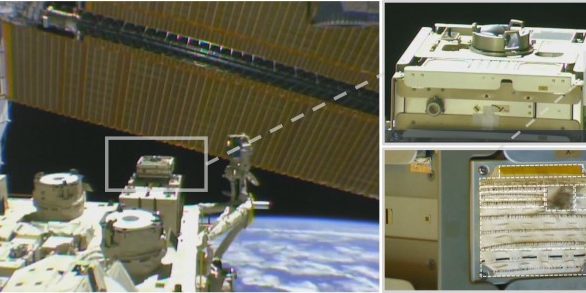RESEARCH TRIANGLE PARK, N.C. –– An Army-funded smart fiber being tested on the International Space Station could be used to develop space dust telescopes and allow astronauts to feel through their pressurized suits.
Researchers at the Army’s Institute for Soldier Nanotechnologies (ISN) at the Massachusetts Institute of Technology developed an acoustic fabric so sensitive to vibrations that it can detect impacts from microscopic high-velocity space particles. A more earthly application of these fabrics could be for blast detection and, in the future, act as sensitive microphones for directional gunshot detection.
The fabric system contains thermally drawn, vibration-sensitive fibers that are capable of converting mechanical vibration energy into electric energy. When micrometeoroids or space debris hit the fabric, the fabric vibrates, and the acoustic fiber generates an electrical signal.
The U.S. Army established the ISN in 2002 as an interdisciplinary research center devoted to dramatically improving the protection, survivability, and mission capabilities of the Soldier and Soldier-supporting platforms and systems.
The acoustic fiber was developed through ISN projects aimed at building next-generation fibers and fabrics for Soldier uniforms and battle gear that could detect a variety of physiological parameters, such as heart rate and respiration, as well as external sounds like gunshots and explosions.


